A popular dim sum delicacy, turnip cake stands out for its fragrant, umami taste and soft, gooey texture. Follow my recipe and tutorial video to make it at home with ease!
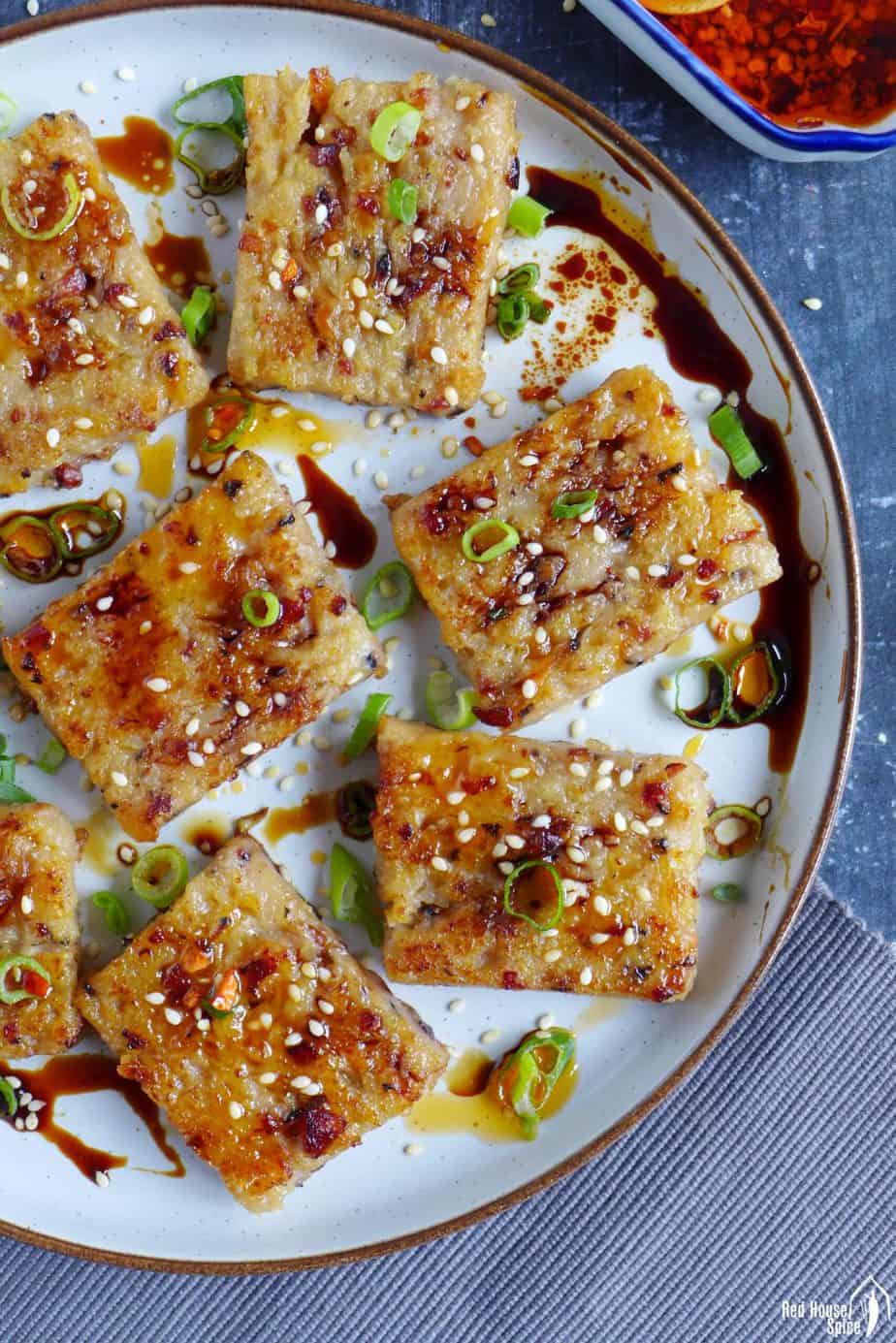
What is Chinese turnip cake
Turnip cake, known as Lo Bak Go in Cantonese and Luo Bo Gao/萝卜糕 in Mandarin, is a classic dim sum dish typically served in Cantonese Yum Cha restaurants. For those who haven’t tasted it or cooked it themselves, I’d like to clarify some confusion caused by the popular English translation of its name.
- Turnip cake is not made of turnip but daikon, a type of winter radish widely used in Asian cuisine. It’s also known as white radish, Chinese radish or mooli.
- Turnip cake is not really a cake as it’s neither sweet nor baked. Instead, it has an aromatic savoury taste and is steamed to form a round or square/rectangle shape. For serving, it’s pan-fried in slices and usually served with a savoury sauce.
What ingredients do you need
Here are the ingredients you’d need to make authentic turnip cake. I classify them into three groups:
The star ingredients:
As I’ve explained in the section above, you’d need daikon radish, instead of turnip, for Chinese turnip cake. Choose the radish that looks smooth on the surface and feels heavy. Avoid the wrinkled, light ones which aren’t fresh enough (Their flesh tends to be less dense and the taste is lacking in sweetness and sharpness).
The tasty & salty ingredients:
They’re chopped small and mixed with the radish to delivery savoury, umami and aromatic flavours.
- Chinese sausage (Lap Cheong/腊肠), a type of dried hard sausage made of pork which often comes in plastic packages. It can be replaced by Cantonese cured pork belly (Lap Yuk/腊肉) or BBQ pork (Char Siu/叉烧).
- Dried shrimp (Xia Mi/虾米) offer great umami taste. They need to be pre-soaked. Traditional turnip cake recipe also calls for dried scallop which delivers similar flavour. You can use both of them or either of them alone (the total quantity remains the same).
- Dried shiitake mushroom. It also needs to be rehydrated. Please be aware that fresh shiitake mushroom is not recommended.
- Shallot or onion.
- Oyster sauce & white pepper. You don’t need extra salt to season as the sausage and shrimp are quite salty.
The starchy ingredients:
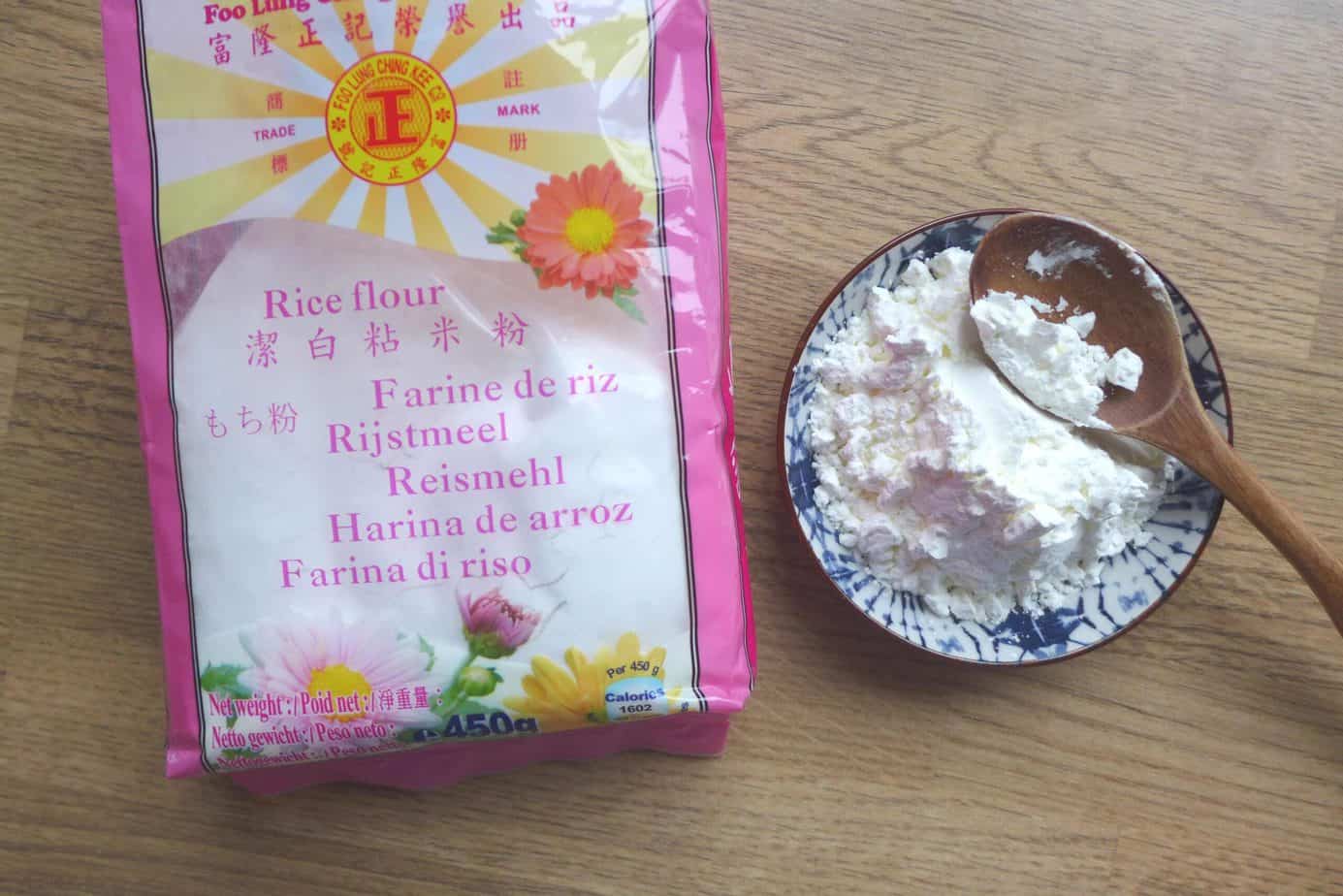
Rice flour (粘米粉) and corn starch are used to help combine all the loose ingredients to form a cake that doesn’t fall apart. They also contribute to the springy texture of the cake.
Summary of the cooking procedure
With all the ingredients to hand, let’s talk about the sequence and methods needed to turn them into a delicious turnip cake. Here is a summary before I provide detailed instructions on each step.
- Cook shredded daikon radish in water until wilted.
- Fry shallots, Chinese sausage,, dried shrimp and mushroom then mix with the drained radish.
- Mix rice flour and corn starch with the radish water saved from step one. Add to the radish then heat up until it thickens.
- Steam the mixture in a container for 50 mins then leave to cool.
- Fry cake slices in a little oil then serve with a sauce.
Step 1: Cook the daikon radish
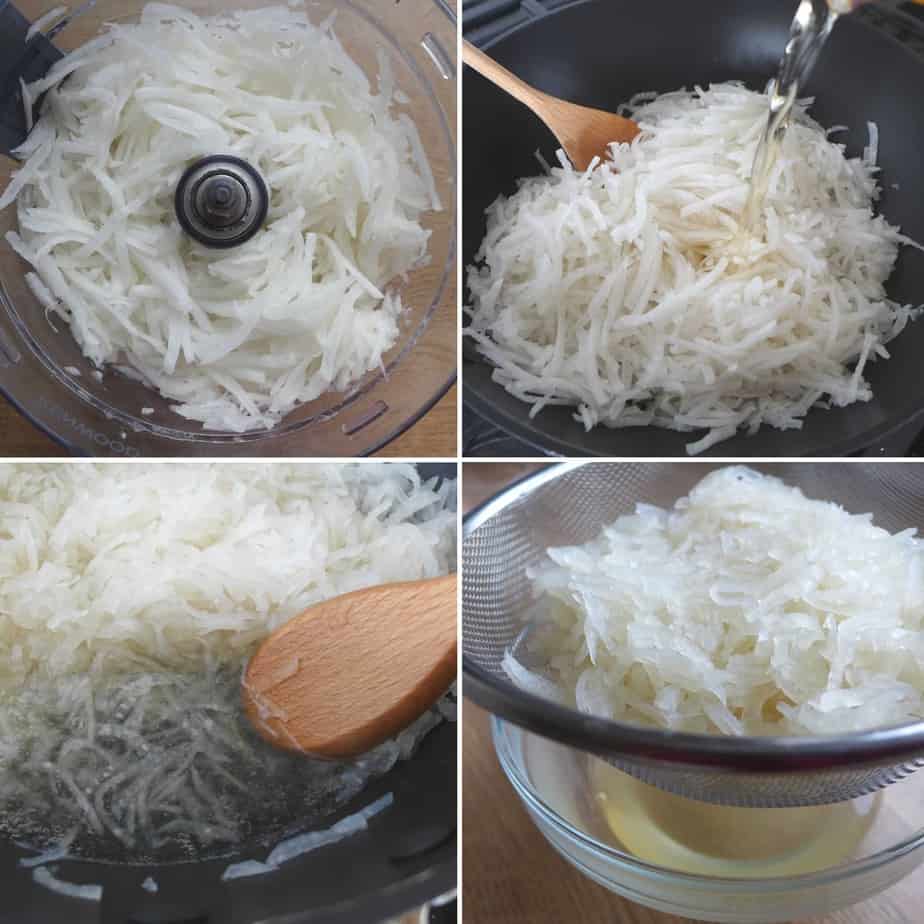
First, peel the radish with a vegetable peeler. Then shred it in one of three ways: grate with a hand grater (with big holes), shred in a food processor or simply cut it into thin strips with a knife.
Cook the shredded radish with a little liquid until softened. You could just use water but I have a trick to make the cake extra flavourful: As I mentioned earlier, the dried shrimp and shiitake mushroom need to be rehydrated beforehand. Don’t throw away the water in which they are soaked. Instead, use it to cook the radish. It makes such a difference in flavour.
After simmering for about 5 minutes, the radish becomes wilted and you’ll see some liquid has been extracted from it. Drain the radish very well using a sieve. Again, don’t discard the flavoursome liquid which will be mixed with the starchy ingredients later on.
Step 2: Fry the tasty & salty bits
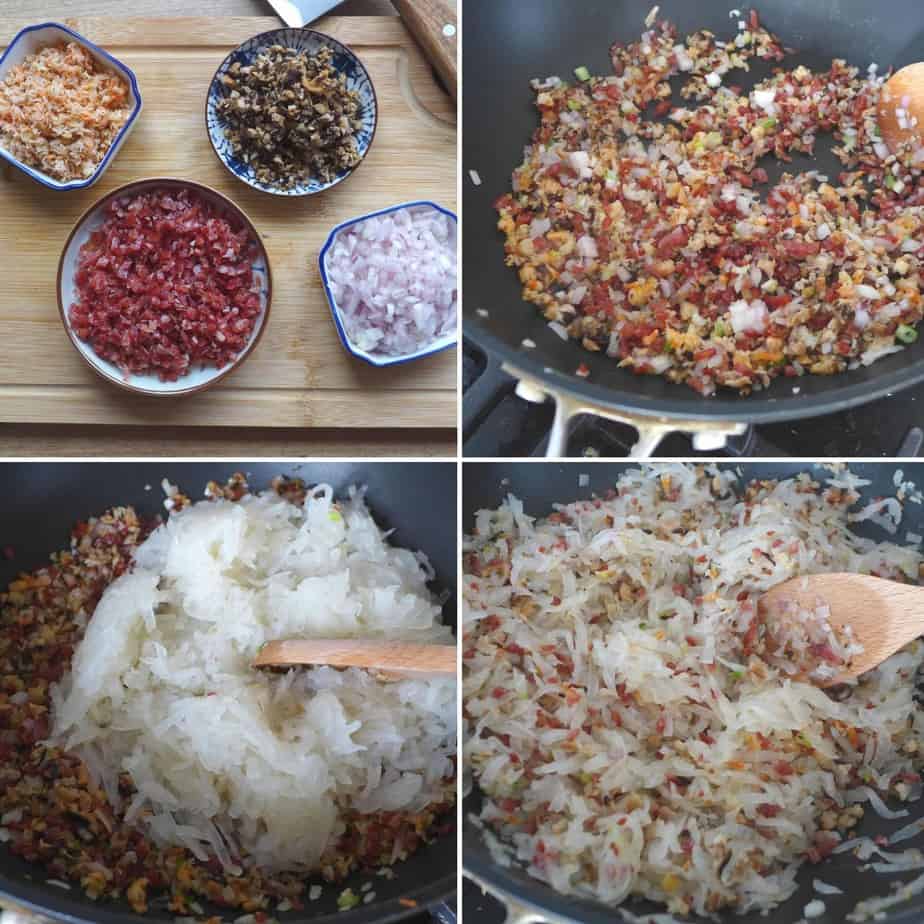
While you’re waiting for the radish to be cooked, mince all the tasty and salty ingredients: Chinese sausage, shallots, dried shrimp and mushroom. Use a food processor if available as it’s quite time-consuming. Remember to cut the sausage into thin slices before adding it to the processor as it’s hard to mince it in chunks.
In a little oil, firstly fry shallots until golden. Add Chinese sausage and fry until some fat is extracted. Stir in the shrimp and mushroom. Fry for a further minute. Then turn off the heat (This is very important). Add the cooked radish, oyster sauce and ground white pepper. Stir well to evenly distribute all the ingredients.
Step 3: Add the starchy ingredients
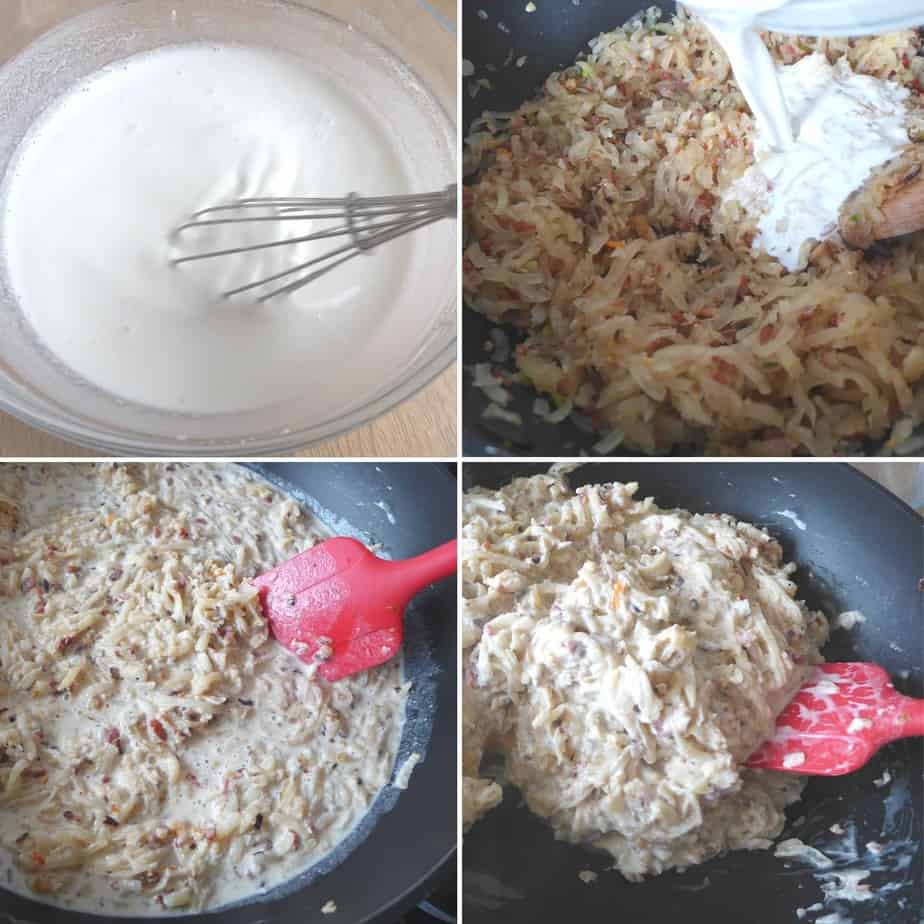
By now, the liquid (in which the radish was cooked) should be cool enough to mix with rice flour and corn starch. It’s crucial that you don’t add the starchy ingredients into hot liquid (it’s ok if it feels warm). Otherwise, you’ll get a sticky mess that’s difficult to mix with the radish.
Once the starch is completely dissolved, pour it onto the radish. Mix well then turn the heat back on to low. Stir constantly while heating. You’ll soon see the liquid disappearing and the mixture becomes a pretty solid block.
Step 4: Steam the cake
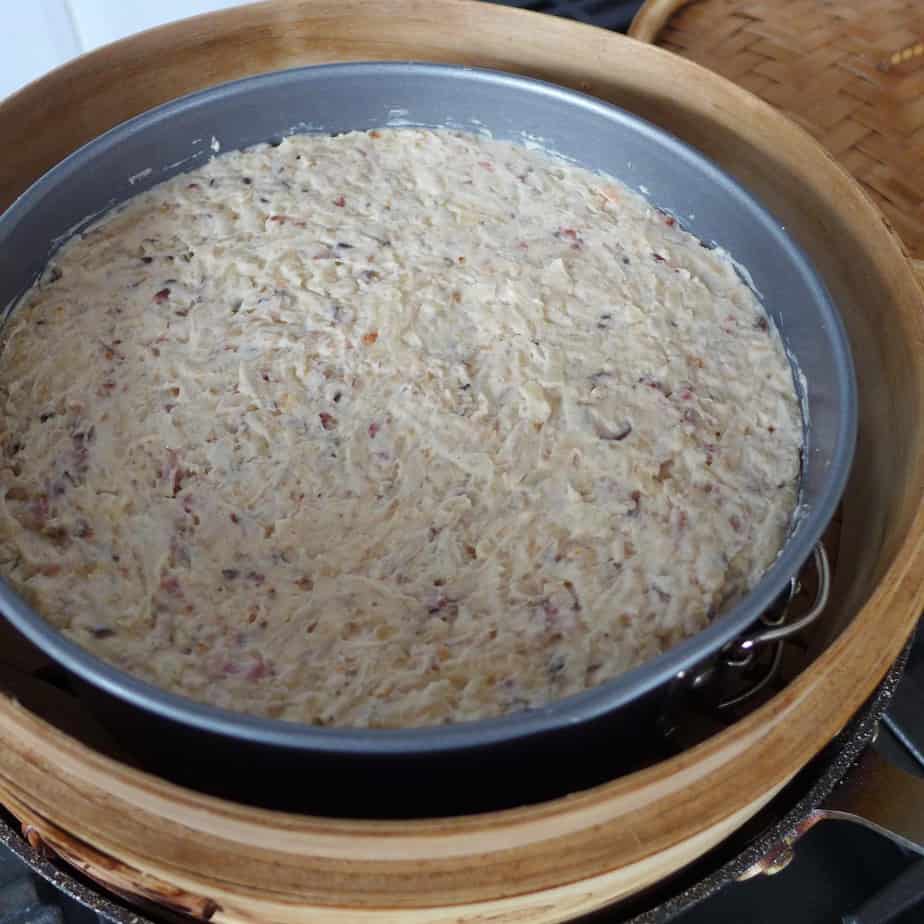
I use a 20cm round cake tin to hold the radish mixture. A square/rectangle container will work well too (or use two small ones). Don’t forget to grease it with a thin layer of oil before you pour in the radish mixture. Level the surface with a spatula.
For steaming, you can either place the tin/container over a steamer rack or into a steamer basket as I do. Leave to steam for 50 mins. You might need to top up the water in case it dries out. So set an alarm to remind yourself to check the water level halfway through.
After steaming, the cake has a more transparent look. Don’t worry if you notice the surface a little wet. It will dry out soon. Leave it to cool naturally inside the tin/container.
Step 5: Pan-fry and serve
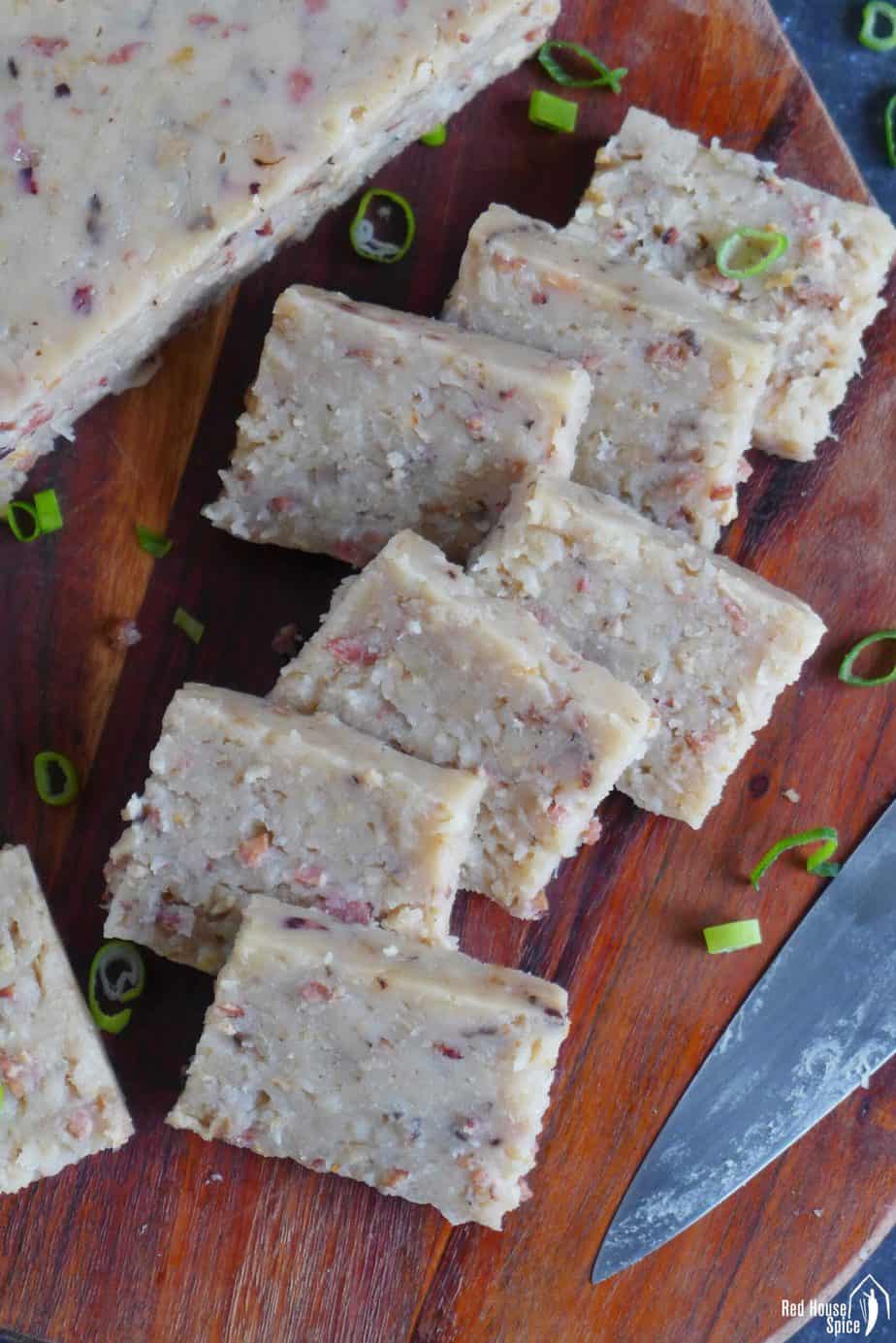
Once the cake is completely cool, slice off the portion that you’d like to serve on the day. Cut it into rectangle pieces that are 1-1.5 cm thick. Heat up a little oil in a frying pan. Lay in the cake pieces and fry until both sides become golden.
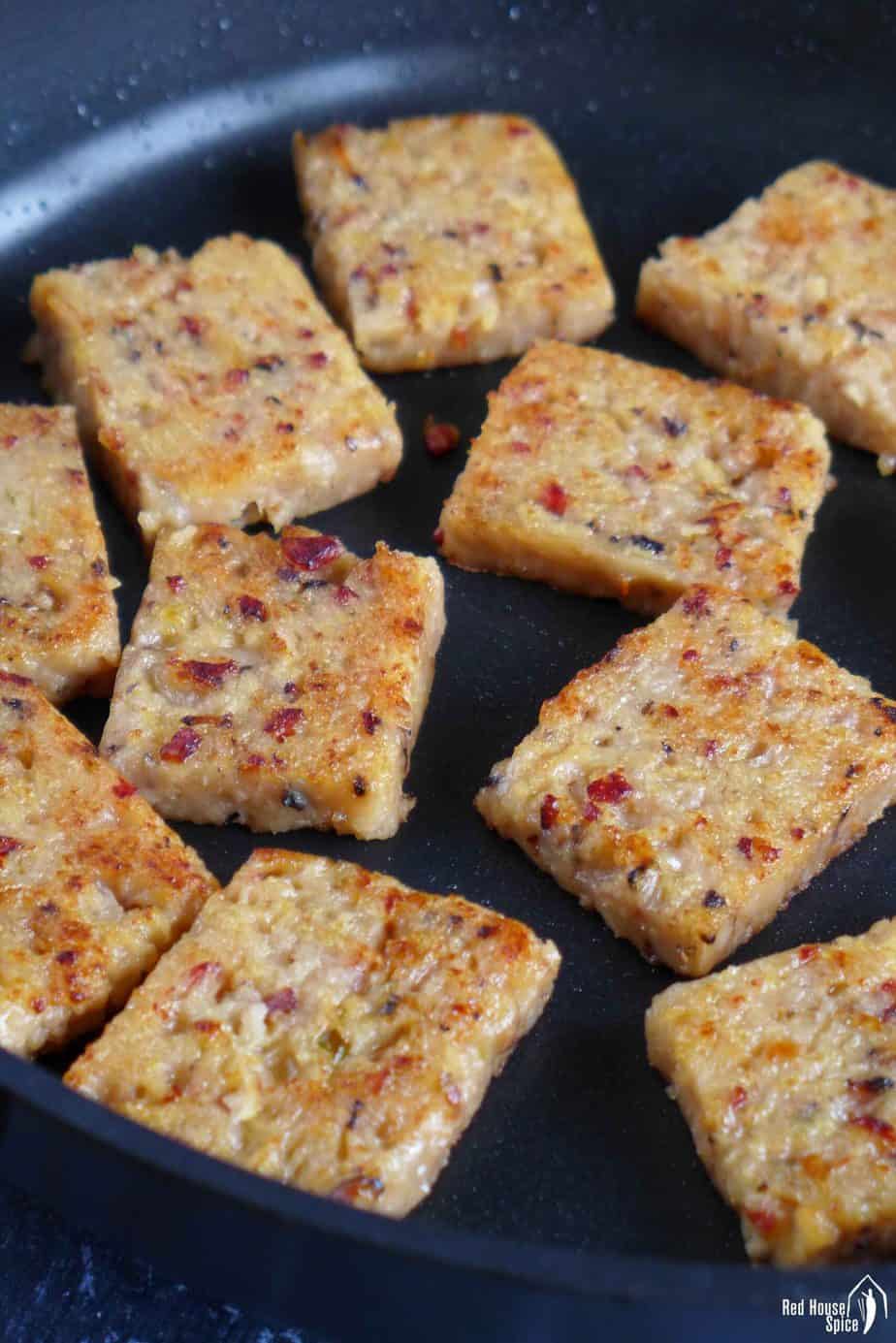
Now it’s time to serve your homemade turnip cake! For this part, you’re free to improvise without following a recipe. Enjoy it on its own or with a sauce of your choice for extra flavour. Here are my favourite accompaniments :
- Toasted sesame seeds
- Finely chopped scallions
- Cantonese style sweet soy sauce
- Homemade chili oil
If you have trouble sourcing sweet soy sauce, make your own! In a saucepan, heat up light soy sauce, dark soy sauce, oyster sauce, sugar and water (ratio 1:1:1:2:2) until the sugar is fully dissolved.
How to store leftovers
For the quantity suggested in my recipe, your turnip cake would be enough for about 8 servings (no point to make just a tiny one for all this effort, right?). The great news is that it freezes well and you can pan-fried it without defrosting. Here is what you need to do:
- Slice the leftover turnip cake into serving pieces.
- Lay them flat onto a tray lined with parchment paper.
- Keep in the freezer until they become frozen.
- Transfer to an airtight container/bag. Store in the freezer for up to two months.
Other dim sum dishes on the blog
Here are a few other dim sum style dishes that you might like:
- Har Gow (Crystal Shrimp Dumpling). Juicy filling wrapped by translucent skin, it’s one of the most ordered dim sum dishes.
- Cheung Fun (Steamed Rice Noodle Rolls). Smooth, slippery, soft and a little chewy, they are made of starched and are stuffed with various fillings.
- Char Siu Bao (BBQ Pork Buns). They’re stuffed bun famous for their fluffy wrapper and saucy Char Siu filling.
- Lo Mai Gai (Sticky Rice Chicken). They’re lotus leaf-wrapped parcels stuffed with flavorful, gooey rice and tender chicken.
- Spring Rolls. They’re deep fried, cylinder-shaped parcels made of golden, crispy wrappers and a tasty filling of various ingredients.
- Shumai. Stuffed with pork and prawns, they’re easier to make than you’d imagine!
- Xiao Long Bao (Soup Dumplings), a Shanghainese delicacy famous for its delicate skin and scrumptious soupy filling.
- Congee. Having a soft, velvety and smooth texture, it’s the ultimate comfort food of Chinese cuisine.
- Steamed Custard Buns. They’re a classic sweet treat adored for its fluffy, cotton-like texture and creamy, fragrant taste.
- Sesame Balls. Crispy, gooey and super nutty, it’s a delectable treat not to be missed.
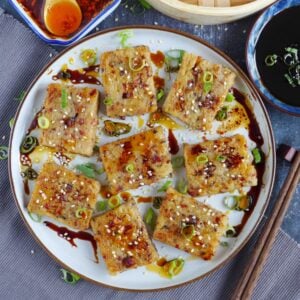
Turnip Cake (Lo Bak Go, 萝卜糕)
Ingredients
- 2 tablespoon dried shrimp - see note 1
- 3 shiitake mushrooms
- 800 g daikon radish - 1.7lbs, see note 2
- 1 tablespoon neutral cooking oil
- 50 g shallots, or onion - 1.7oz
- 2 Chinese sausages
- 1 tablespoon oyster sauce
- ¼ teaspoon ground white pepper
- 160 g rice flour - 5.6oz
- 50 g corn starch, or tapioca starch - 1.7oz
For serving
- Neutral cooking oil (for frying)
- Sesame seeds, toasted
- Scallions, finely chopped
- Sweet soy sauce - see note 3
- Homemade chili oil - optional
Instructions
Soak the dried ingredients
- Rinse dried shrimp and dried shiitake mushroom. Soak them in about 400ml water overnight or at least 3 hours.
Cook the daikon radish
- Peel the radish then shred it with a hand grater or in a food processor.
- Put the shredded radish into a wok/pot. Pour in the water which was used to soak the dried shrimp and mushroom (discard the solid bits at the bottom of the bowl). Bring it to a boil then leave to simmer for about 5 mins until the radish is wilted.
- Place a sieve over a bowl, drain the radish. Squeeze out as much liquid as possible. Leave the liquid to cool for later use.
Fry the salty ingredients
- While waiting for the radish to cook, chop dried shrimp, mushroom, shallots and Chinese sausage into tiny pieces.
- Add oil to the wok/pot (cleaned & dried). Over medium heat, fry shallots until gold. Add Chinese sausage and fry until some fat is extracted. Stir in the dried shrimp and mushroom. Fry for a further minute.
- Turn off the heat. Add the drained radish, oyster sauce and white pepper. Mix well.
Combine with the starchy liquid
- Measure out 400ml of the liquid in which the radish was cooked. Top up with room temperature water if it’s not enough (Make sure the liquid isn’t hot any more). Add rice flour and corn starch. Mix until well dissolved.
- Pour it into the radish mixture. Stir very well then turn on the heat to low. Stir constantly until the liquid solidifies. Remove from the heat.
Steam the cake
- Grease a cake tin or a glass container with oil (I use a 20cm round cake tin). Put in the radish mixture. Level the surface with a spatula.
- Place the tin/container into a steamer. Steam over medium-low heat for 50 mins. Remember to check the water level halfway through. Top up with hot water if necessary.
- Take the cake out of the steamer. Leave to cool naturally inside the tin/container.
Fry & serve the cake
- Carefully remove the cake out of the tin/container. Cut off the portion you’d like to serve on the day.
- Slice it into 1-1.5cm thick pieces. Pan-fry over medium heat in a little oil until both sides turn golden.
- Serve with sesame seeds, finely chopped scallions and sweet soy sauce. Add a dash of homemade chili oil if you’d like an extra kick.
Store the cake
- You can keep the leftover cake in the fridge for up to three days.
- It freezes well too. Cut it into slices. Lay flat on a tray lined with parchment paper. Keep in the freezer until fully frozen. Transfer to an airtight container/bag. Freeze for up to two months.
- Fry the usual way (over low heat) without defrosting.
Video
NOTES
NUTRITION
NUTRITION DISCLOSURE: Nutritional information on this website is provided as a courtesy to readers. It should be considered estimates. Please use your own brand nutritional values or your preferred nutrition calculator to double check against our estimates.



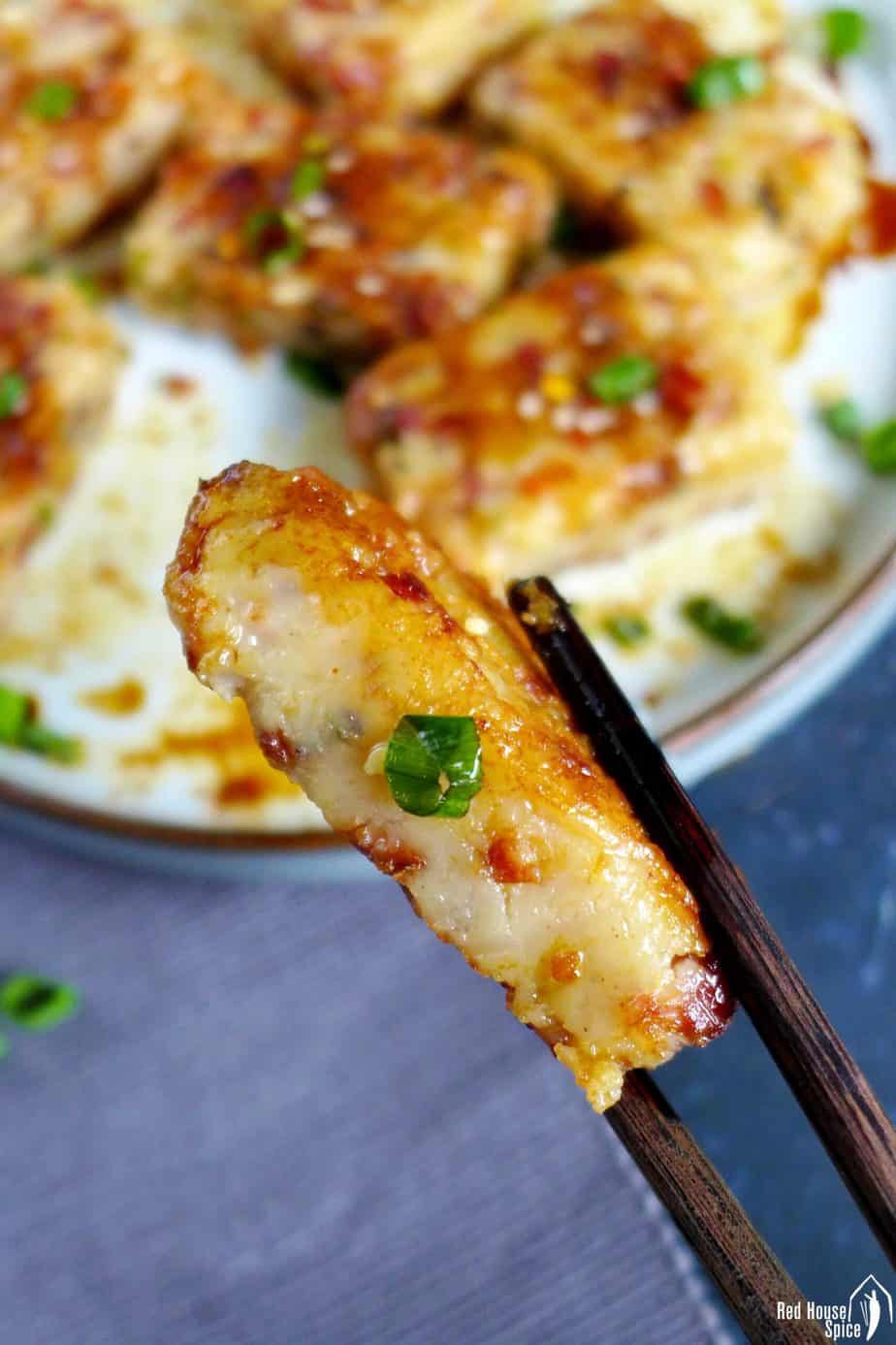
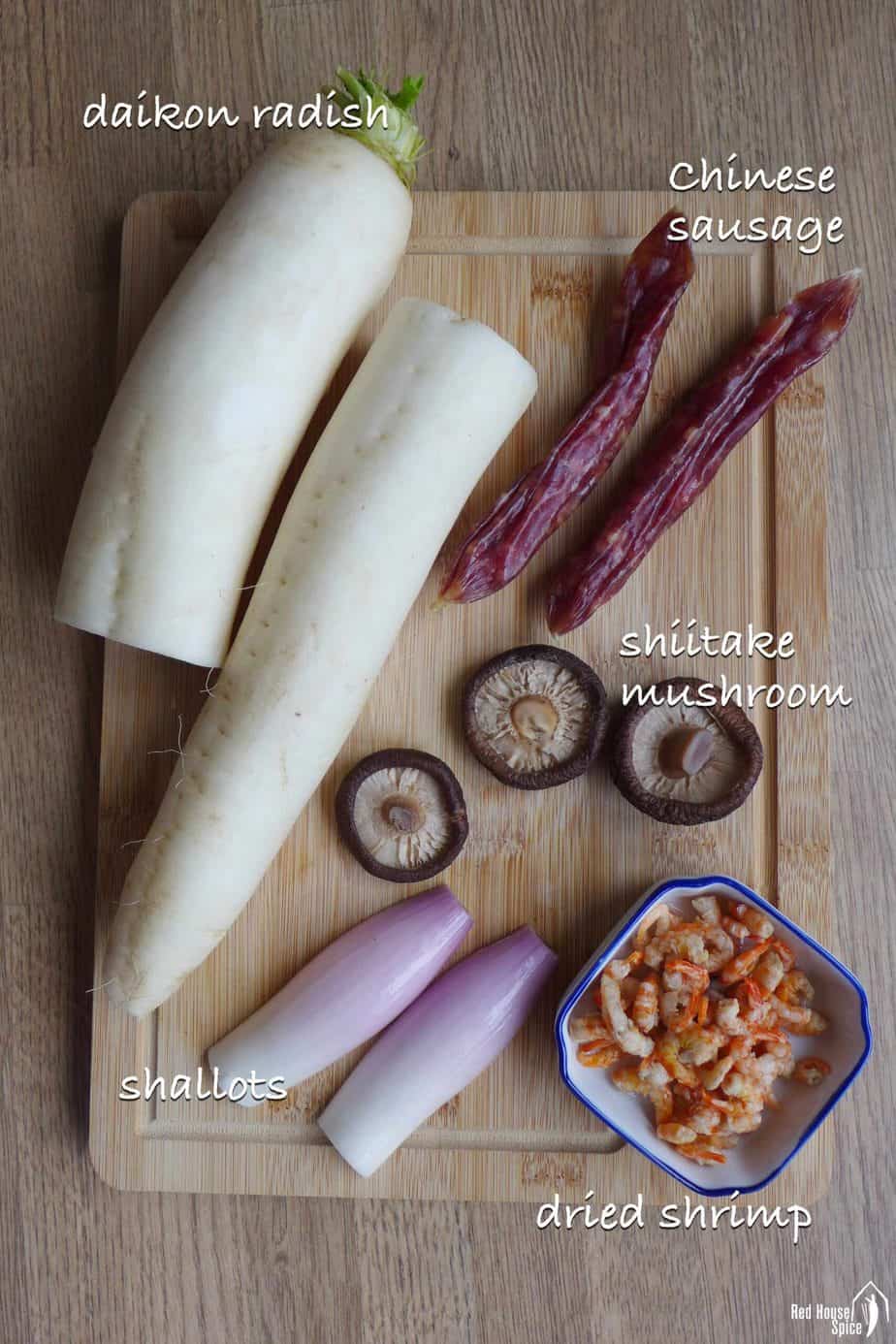
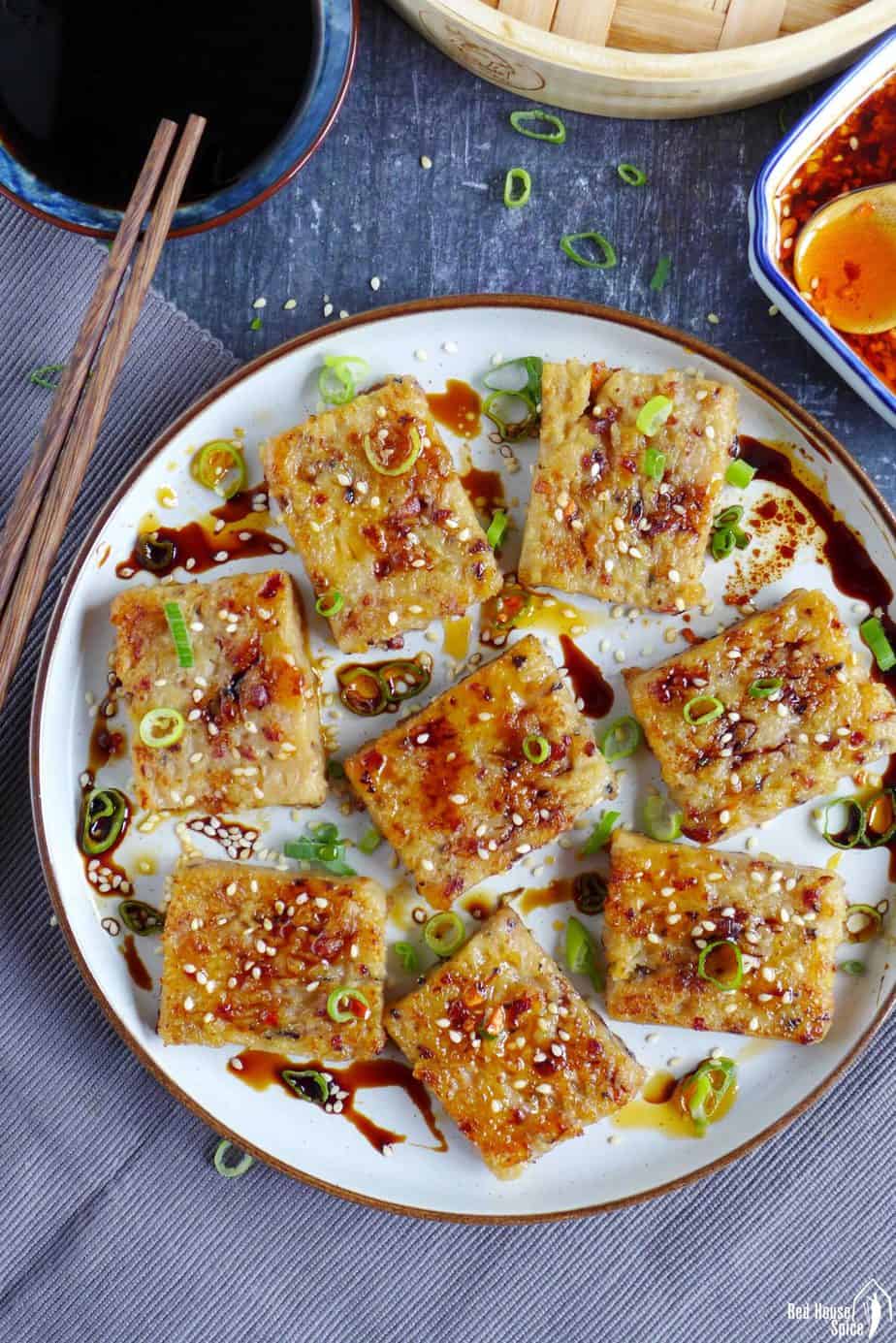
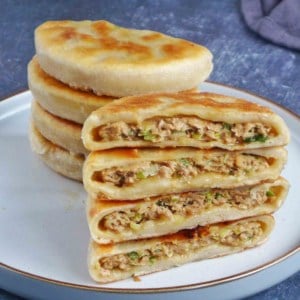
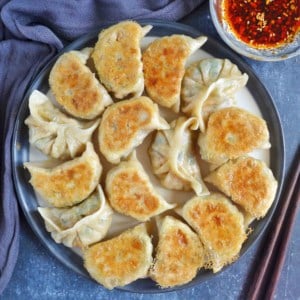

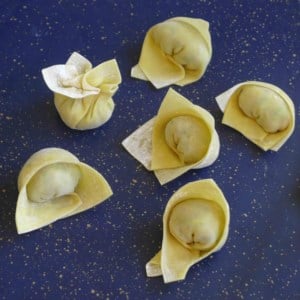
One of the best dim sum!
Agree!
Mine turned out too soft. What can I do to harden it? Reduce the water or add more flour?
Have you followed the liquid to flour/starch ratio in the recipe? To adjust, you can either reduce the liquid or increase the rice flour quantity.
Wei, thank you for this recipe – so yummy. Loved the summary instructions.
One question, my turnip cake turned out quite soft and it was hard to cut/hold together. Do you know why? Is it because I didn’t cook the liquid out enough, cool thoroughly (I did put in fridge overnight – maybe freeze), or use the right amount of flour/starch (I winged the measurements), or something else?
Thank you for trying out my recipe Sarah! It sounds like your cooked cake had too much moisture. This is because the liquid to flour/starch ratio wasn’t quite right. Try measuring out the ingredients next time. Good luck!
Wow, Thank you so much for sharing your recipe ms. Wei Guo. You are making this recipe so simple to follow. I love it, its so delicious 😋. This recipe is a keeper!!
So happy to hear that!
Very nice recipe! I love it.
That’s wonderful to hear Vangie!
Hi, any tips on pan frying? My experience is it always sticks onto the pan (non-stick and stainless steel) and doesn’t brown. Thanks.
I don’t really understand why it would stick to a non-stick pan. If using a stainless steel pan, you need to heat up the pan until very hot then put in the turnip cake pieces. Don’t move them until the bottom side becomes golden and firm. BTW, did you use a little oil to fry?